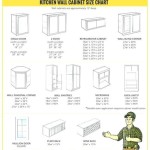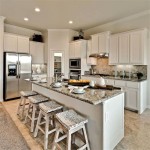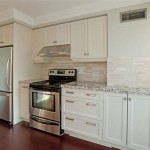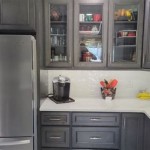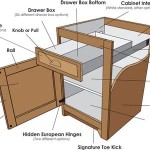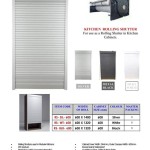```html
Imported Kitchen Cabinets: A Comprehensive Overview
Imported kitchen cabinets represent a significant segment of the cabinetry market, offering a diverse range of styles, materials, and price points to consumers globally. The decision to opt for imported cabinets often involves a careful evaluation of factors such as cost, quality, availability, and design preferences. Understanding the nuances of this market is crucial for homeowners, contractors, and interior designers involved in kitchen renovation or new construction projects.
The global kitchen cabinet industry is characterized by a complex network of manufacturers, distributors, and retailers. Countries known for exporting kitchen cabinets include China, Italy, Germany, Vietnam, and Canada, among others. Each region brings its own unique strengths to the market, whether it be large-scale manufacturing capabilities, innovative design features, or specialized material expertise.
The increasing popularity of imported kitchen cabinets can be attributed to several factors. Firstly, the availability of cabinets at competitive prices, particularly those sourced from countries with lower labor and material costs, makes them attractive to budget-conscious consumers. Secondly, the wide variety of styles and designs available from different regions allows homeowners to find cabinets that perfectly match their aesthetic preferences. Finally, advancements in logistics and international trade have made it easier and more efficient to import cabinets from around the world.
Factors Influencing the Selection of Imported Kitchen Cabinets
Several critical factors must be considered when evaluating imported kitchen cabinets. These factors directly impact the overall satisfaction and long-term performance of the cabinetry.
Material Quality: The type of material used in the construction of kitchen cabinets significantly affects their durability, appearance, and resistance to moisture and wear. Common materials include solid wood, plywood, particleboard, and MDF (Medium-Density Fiberboard). Solid wood cabinets are generally considered the most durable and aesthetically pleasing but are also the most expensive. Plywood offers a good balance of strength and affordability, while particleboard and MDF are often used in less expensive cabinets. The finish and type of veneer used also impact the overall look and longevity of the cabinet.
When considering imported cabinets, it is essential to verify the source and quality of the materials. Some countries may have different standards for material quality and safety compared to domestic suppliers. Requesting detailed specifications and certifications can help ensure that the cabinets meet the required standards for formaldehyde emissions, moisture resistance, and structural integrity.
Construction and Craftsmanship: The construction method used to assemble kitchen cabinets plays a crucial role in their stability and longevity. Common construction methods include face-frame construction, frameless construction (also known as European-style), and inset construction. Face-frame cabinets have a frame around the cabinet box, providing added strength and a traditional look. Frameless cabinets offer a more contemporary appearance with full-overlay doors and drawers. Inset cabinets feature doors and drawers that are flush with the cabinet frame, creating a sleek and sophisticated look.
Examining the joinery, hardware, and finish quality is critical when evaluating imported cabinets. Look for solid dovetail joints, sturdy hinges, and smooth drawer glides. The finish should be even and free from imperfections. Inquire about the warranty offered by the manufacturer and the availability of replacement parts. Poor construction can lead to premature failure, requiring costly repairs or replacement.
Design and Style: Imported kitchen cabinets offer a wide array of styles and designs to suit various tastes and preferences. From traditional raised-panel doors to sleek, modern flat-panel designs, the options are virtually limitless. Some regions are known for specific design aesthetics. For example, Italian cabinets often feature minimalist designs and high-gloss finishes, while German cabinets are known for their precision engineering and functionality.
When selecting imported cabinets, consider the overall design of the kitchen and the desired aesthetic. Ensure that the cabinet style complements the existing architectural features and decor. Also, consider the functionality of the cabinets. Are there enough drawers and shelves to meet your storage needs? Are the cabinets ergonomically designed for easy access and use? Carefully reviewing the design specifications and requesting samples can help ensure that the cabinets meet your expectations.
Advantages of Choosing Imported Kitchen Cabinets
While it's essential to carefully evaluate the risks, there are also several potential advantages to selecting imported kitchen cabinets.
Cost Savings: One of the primary reasons consumers choose imported kitchen cabinets is the potential for cost savings. Countries with lower labor and material costs can often produce cabinets at significantly lower prices than domestic manufacturers. This can be particularly appealing for homeowners on a tight budget.
It's important to note that the cost savings may not always be as significant as they appear. Shipping costs, import duties, and potential delays can add to the overall cost. It's crucial to obtain a detailed cost breakdown from the supplier, including all associated fees, to accurately assess the affordability of imported cabinets. Also, consider potential costs related to installation. Some imported cabinets may require specialized installation techniques or hardware, which can increase labor costs.
Unique Designs and Styles: Imported kitchen cabinets often offer unique designs and styles that are not readily available from domestic manufacturers. This can be particularly appealing to homeowners who are looking for a specific aesthetic or a more customized look. Different regions have different design traditions and manufacturing capabilities, resulting in a diverse range of cabinet styles.
For example, you might find cabinets with intricate carvings from countries with a rich woodworking heritage or cabinets with sleek, minimalist designs from countries known for their modern architecture. Exploring the offerings from different regions can help you find cabinets that perfectly match your design vision.
Advanced Manufacturing Techniques: Some countries have invested heavily in advanced manufacturing technologies, allowing them to produce kitchen cabinets with superior precision and quality. These technologies can include automated cutting and assembly lines, sophisticated finishing processes, and advanced testing equipment.
Cabinets produced using advanced manufacturing techniques often have tighter tolerances, smoother finishes, and more consistent quality than those produced using traditional methods. This can result in cabinets that are more durable, aesthetically pleasing, and functionally superior. Inquiring about the manufacturing processes used by the supplier can help you assess the quality of the cabinets.
Potential Challenges Associated with Imported Kitchen Cabinets
Despite the advantages, potential challenges exist when opting for imported kitchen cabinets.
Quality Control Issues: Maintaining consistent quality control can be challenging when importing cabinets from overseas. Differences in manufacturing standards, material sourcing, and labor practices can lead to variations in quality. It is vital to conduct thorough due diligence and work with reputable suppliers who have a proven track record of delivering high-quality products.
Requesting detailed specifications, material certifications, and independent quality inspections can help mitigate the risk of quality control issues. It is also advisable to visit the supplier's manufacturing facility, if possible, to assess their production processes and quality control measures firsthand.
Lead Times and Shipping Delays: Importing kitchen cabinets can often involve longer lead times and potential shipping delays compared to purchasing from domestic suppliers. International shipping can be affected by various factors, including weather conditions, customs inspections, and port congestion. These delays can disrupt project timelines and potentially increase costs.
Planning accordingly and allowing ample time for shipping and delivery is crucial. Working with a supplier who has experience in international logistics and can provide accurate delivery estimates is also essential. Obtaining insurance to cover potential losses due to shipping delays or damage can provide added protection.
Communication Barriers: Language barriers and cultural differences can sometimes create communication challenges when working with overseas suppliers. Misunderstandings about specifications, delivery schedules, or payment terms can lead to errors and delays. It is essential to establish clear communication channels and work with suppliers who have English-speaking representatives or interpreters.
Using visual aids, such as drawings and diagrams, can help clarify specifications and ensure that the supplier understands your requirements. Documenting all communications in writing and confirming key details can also help prevent misunderstandings.
Warranty and Support: Obtaining warranty service and support for imported kitchen cabinets can sometimes be more challenging than dealing with domestic suppliers. Returning defective cabinets or obtaining replacement parts may involve lengthy shipping times and complex customs procedures. It is important to carefully review the warranty terms and conditions before purchasing and ensure that the supplier has a readily available support system.
Inquire about the supplier's return policy, warranty coverage, and availability of replacement parts. Ensure that the supplier has a local representative or service center that can provide prompt assistance in case of any issues. Obtaining independent insurance to cover potential warranty claims can also provide added protection.
Ultimately, the decision to purchase imported kitchen cabinets requires a thorough evaluation of the benefits and risks involved. By carefully considering the factors outlined above, homeowners and contractors can make informed choices and select cabinets that meet their needs and budget.
```
Imported Kitchen Cabinets From China Cabinet Made In Com

How To Buy And Import Kitchen Cabinets From China Foshan Sourcing

Modern Solid Wood Furniture Imported Kitchen Cabinet From China Project Wooden Made In Com

Hot Item Imported Kitchen Cabinets From China Modular Cabinet Designs Aluminum Aluminium

Modern Solid Wood Furniture Imported Kitchen Cabinet From China Project Wooden Made In Com

Pvc Modern Imported Kitchen Cabinets Wall Mounted

Home Hotel Interior Wooden Kitchen Cabinetry Design Imported Modern Lacquer Black Matt Finish Cabinets 0035 China Cabinet Organizers And Storage Made In Com

Imported Kitchen

Modern Imported Kitchen

Modern Solid Wood Furniture Imported Kitchen Cabinet From China Project Wooden Made In Com
Related Posts

